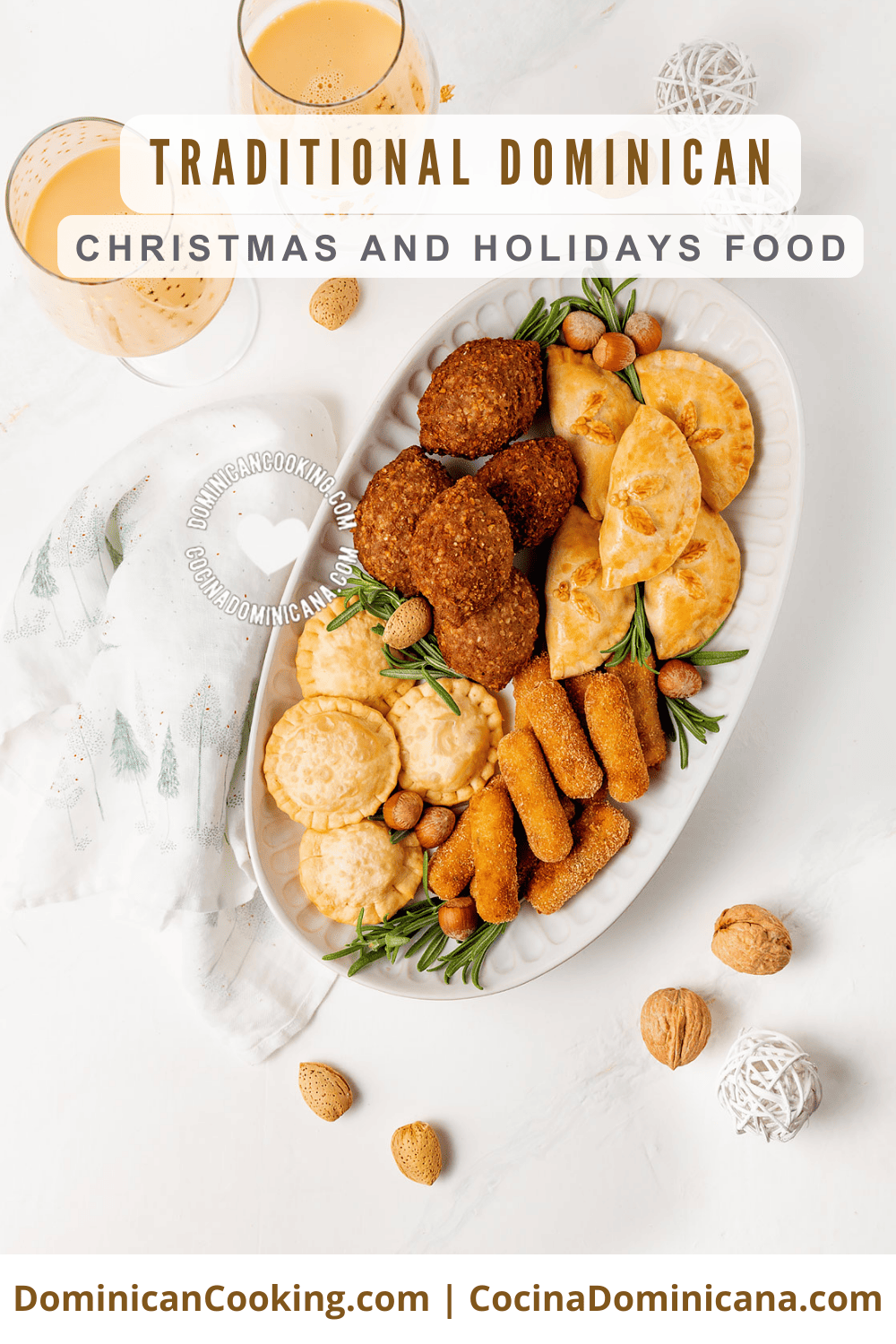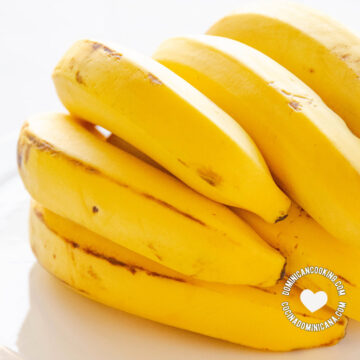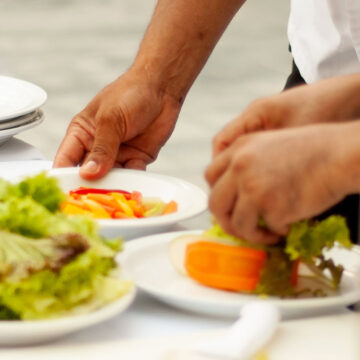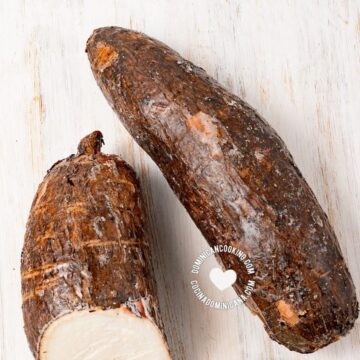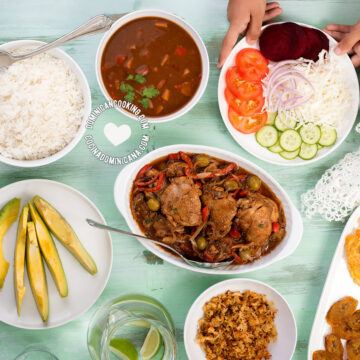Christmas and New Year are by far the most important Dominican celebrations of the year. Food takes center stage, with a festive menu firmly rooted in Dominican Republic's heritage. The associated traditions are a combination of Dominican customs and new international influences. See the Dominican Christmas, New Year, and Thanksgiving food and traditions.
By - Last reviewed . Published Oct 17, 2019
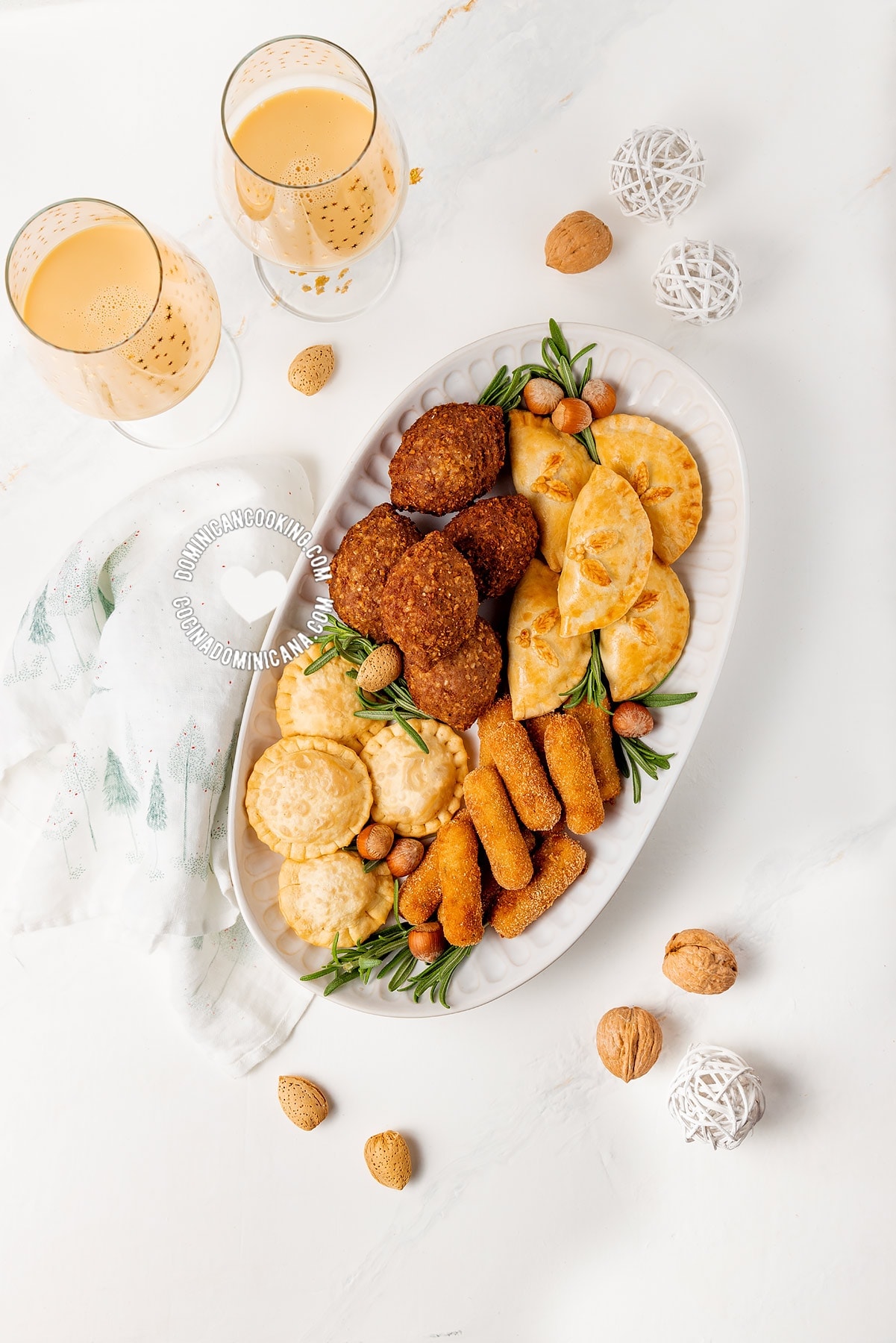
When temperatures start to fall, and the sun begins to set a bit earlier, corner fruit stands and roadside fruit vendors in the central square – el parque – of towns and cities in the Dominican Republic display their seasonal fare: apples, mandarins, pears, and grapes dangling from strings, a lot like seasonal baubles.
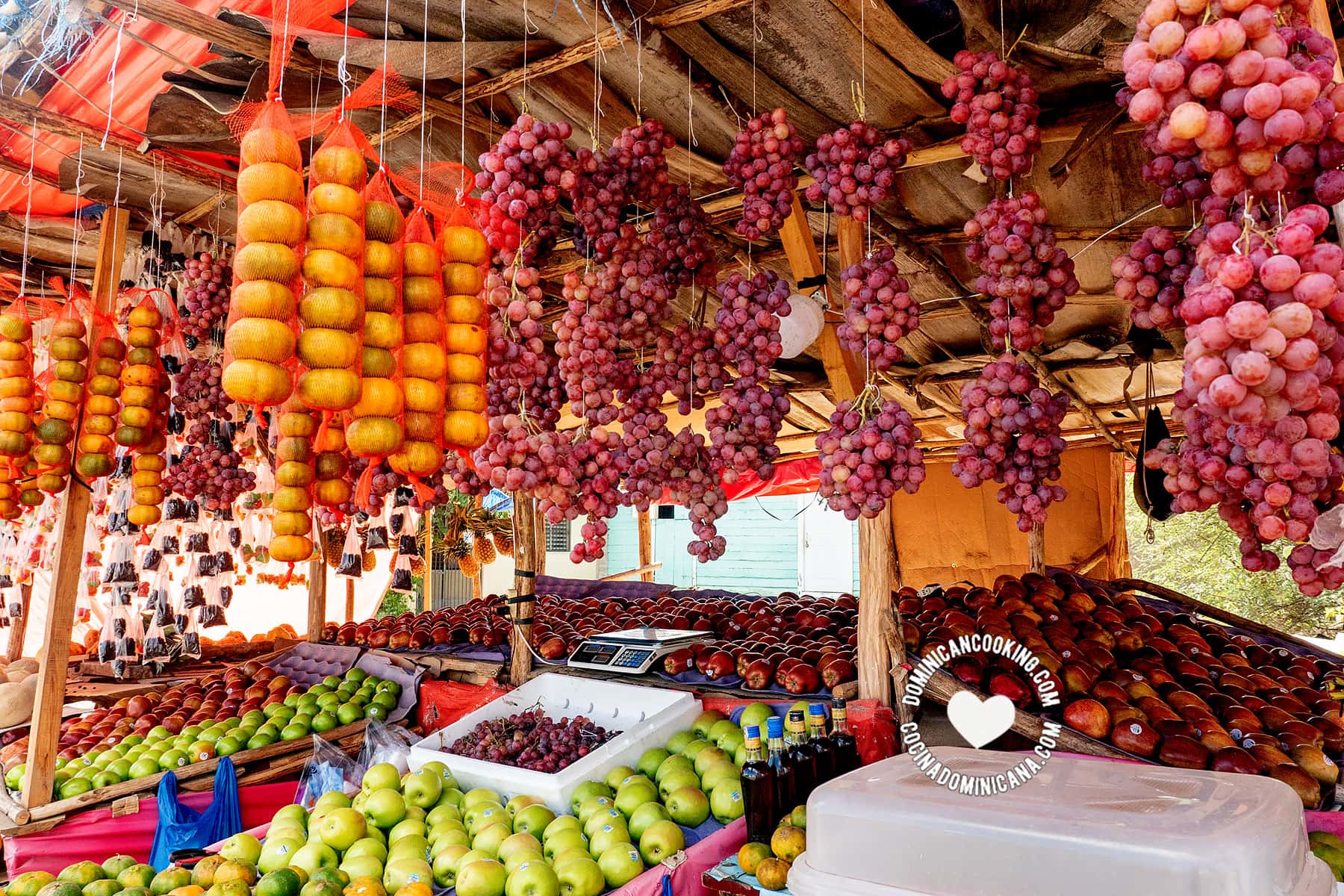
Traditional Dominican Christmas food
Food is probably the most important and distinctive part of the holiday celebrations in the Dominican Republic.
Socioeconomic conditions and family traditions will dictate which dishes and how many will be served at the holiday feasts, but these are what most Dominicans aspire to serve at these family events.
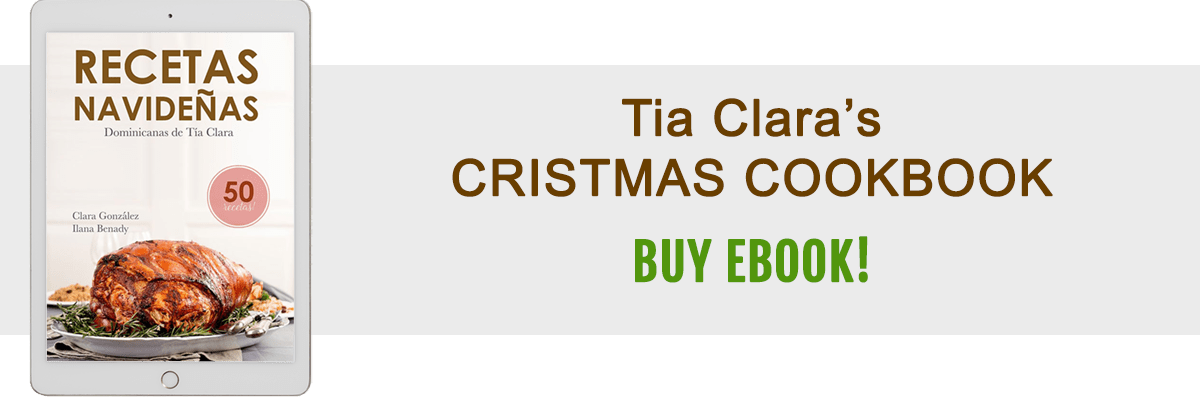
Christmas foods and drinks in the Dominican Republic
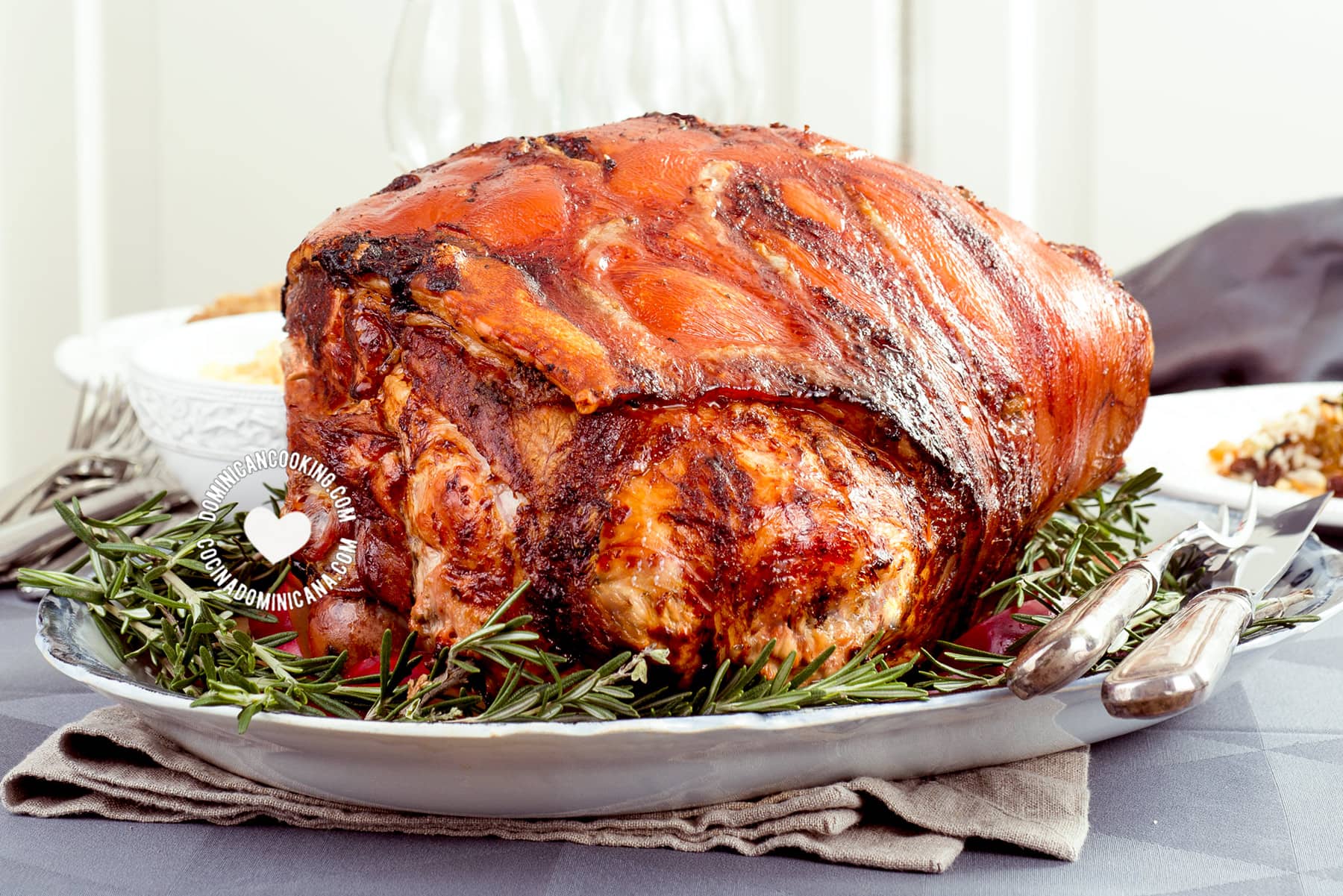
The traditional Christmas dinner eaten on Christmas Eve typically consists of pork roast (Puerco asado or lechón asado), rice with pigeon peas (Moro de guandules), Christmas rice with raisins and almonds, and potato salad (Ensalada rusa – Russian salad – or Ensalada mixta, made with potatoes, carrots and other vegetables) and its festive version made with apples and beets.
Alternative meat dishes are Pavo (turkey roast), and Pollo asado (roast chicken).
Other Christmas treats
Snack foods or picaderas, like Kipes (quipes or kibbes), and Pastelitos (empanadas, pasties), are also popular at Christmas parties and gatherings.
Pastelones (casseroles) are a popular addition to the festivities, and none more popular than Pastelón de plátano maduro.
Pastelones should not be confused with Pasteles en hojas (plantain and beef/chicken/pork pockets, similar to tamales, wrapped in plantain or banana leaves) which are also very common at this time of the year. Don't miss the yuca-based pasteles or our Pastelón en hoja casserole.
Telera is the name for a long soft bread that is only eaten at Christmas time.
Many of the traditional elements of the Dominican holiday season are decidedly local, while others are imported, like Danish butter cookies, Spanish turrón, candies, nuts, and foreign fruits.
Christmas fruits
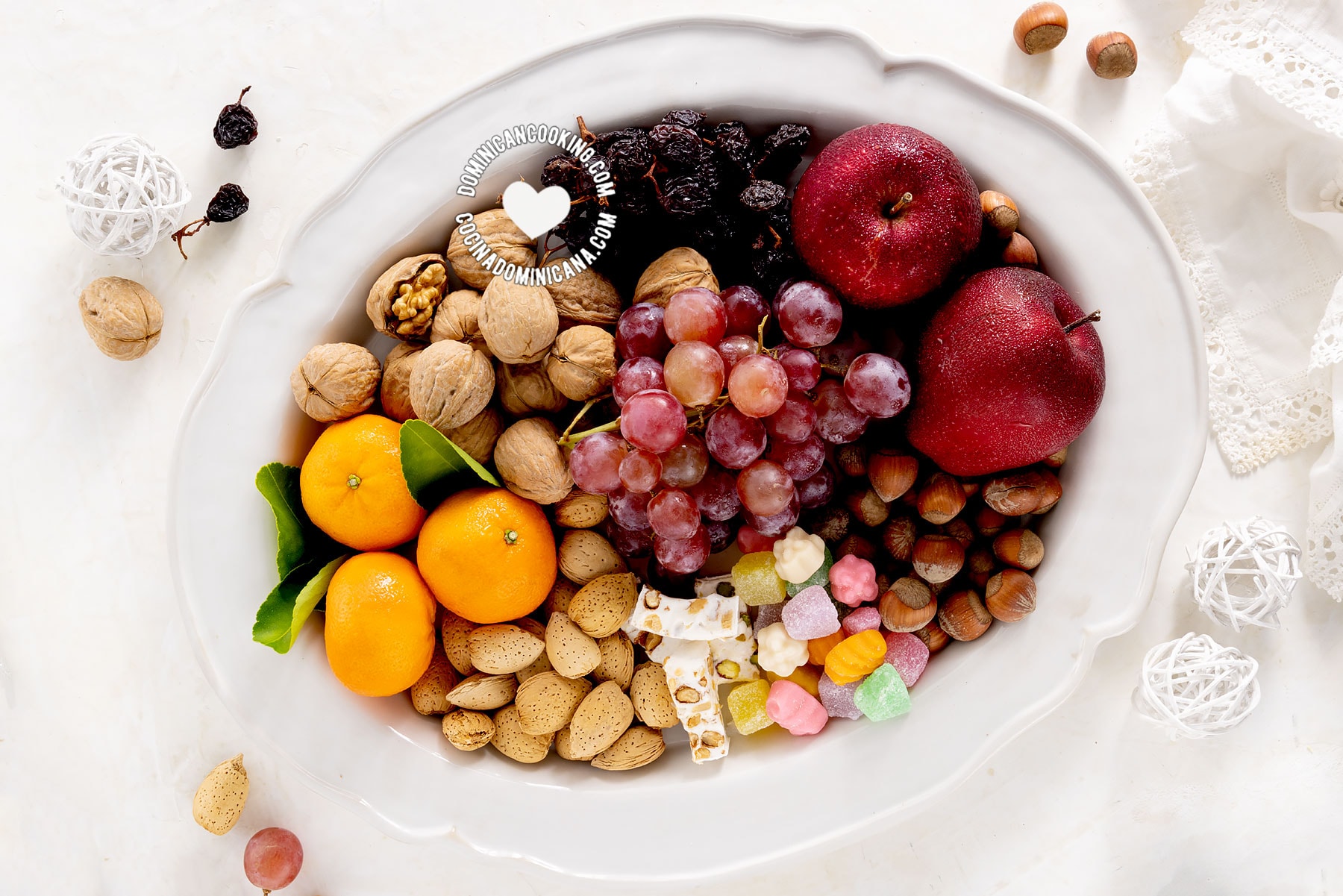
Year-round, Dominicans have access to juicy mangoes, creamy avocados, and arguably the world’s best bananas, just to mention a few of our locally-grown fruits.
The less fortunate had to wait until the Christmas bonus bonanza to afford the imports. And this is how apples, mandarins, grapes, and raisins have become an integral part of the Dominican Christmas tradition.
Christmas drinks
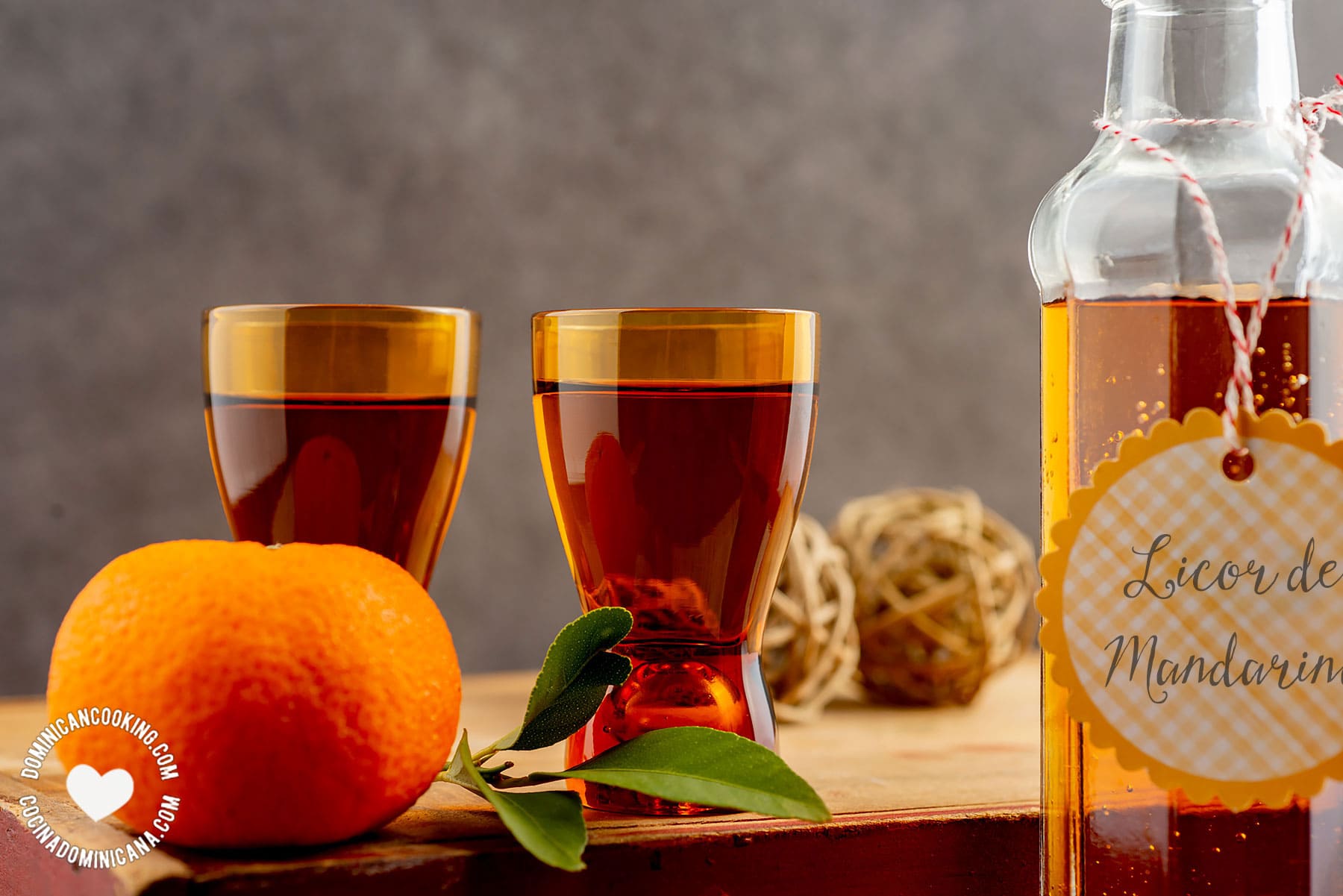
Popular traditional Dominican Christmas drinks include alcoholic and non-alcoholic eggnog – Ponche - and the lesser-known Licor de mandarina, a mandarin liqueur, and hot beverages like Té de jengibre (ginger tea) and the obscure Gaviao navideño.
Christmas desserts
There is no particular dessert commonly associated with the Christmas eve feast. Candy, apples, and grapes are usually served after the meal; but we offer some cakes and pudding with traditional elements already present in La Cena navideña.
Read more: More Dominican Holiday Recipes
How Dominicans celebrate Christmas
Typically, Dominicans celebrate Christmas by gathering with their nuclear or extended family to eat their Christmas meal on Nochebuena (Christmas Eve). It is the most lavish meal of the year for most Dominicans.
While most of our holiday customs are common to the whole country, how you celebrate the holidays depends greatly on socioeconomic status and family history.
Dominican New Year's Eve
The year's end celebrations in the Dominican Republic continue beyond New Year's Eve (actually, to Reyes – January 6 – to be exact). La Cena de año nuevo, or la Cena del 31, a similar feast to the one served for Christmas, is enjoyed on the eve of the new year.
New Year foods
The dishes on the menu will be similar to those served for the Christmas Eve dinner: roast pork or turkey or chicken, Moro de guandules, and Ensalada rusa.
Chek our "menú navideño dominicano" for more Christmas Eve food ideas.
New Year traditions
On New Year's Eve, families get together for the festive dinner and to wait for midnight and "las doce campanadas", or the twelve chimes, the countdown to the new year. Some families observe the Spanish custom of eating 12 grapes, one for each chime of midnight.
A public fireworks display (fuegos artificiales) is also part of the New Year celebration. Individual use of fireworks has been banned for some years.
The young adults in the family may continue the party at discos and nightclubs, unlike the Christmas party, which is usually a strictly family affair.
Thanksgiving in the Dominican Republic
Thanksgiving is not officially part of the traditional Dominican festive calendar. However, Dominicans who have emigrated to the United States (and Canada) have incorporated the celebration into their family customs. Families in the Dominican Republic with US/Canadian connections also celebrate Thanksgiving.
Dominican Thanksgiving food
Unsurprisingly, Dominican holiday food served at the Christmas and New Year feasts has become part of the Thanksgiving celebration in Dominican homes. Some popular Dominican Thanksgiving dishes are Christmas Roast pork, turkey or chicken, Moro de guandules, and Ensalada rusa.
Christmas decorations and symbols
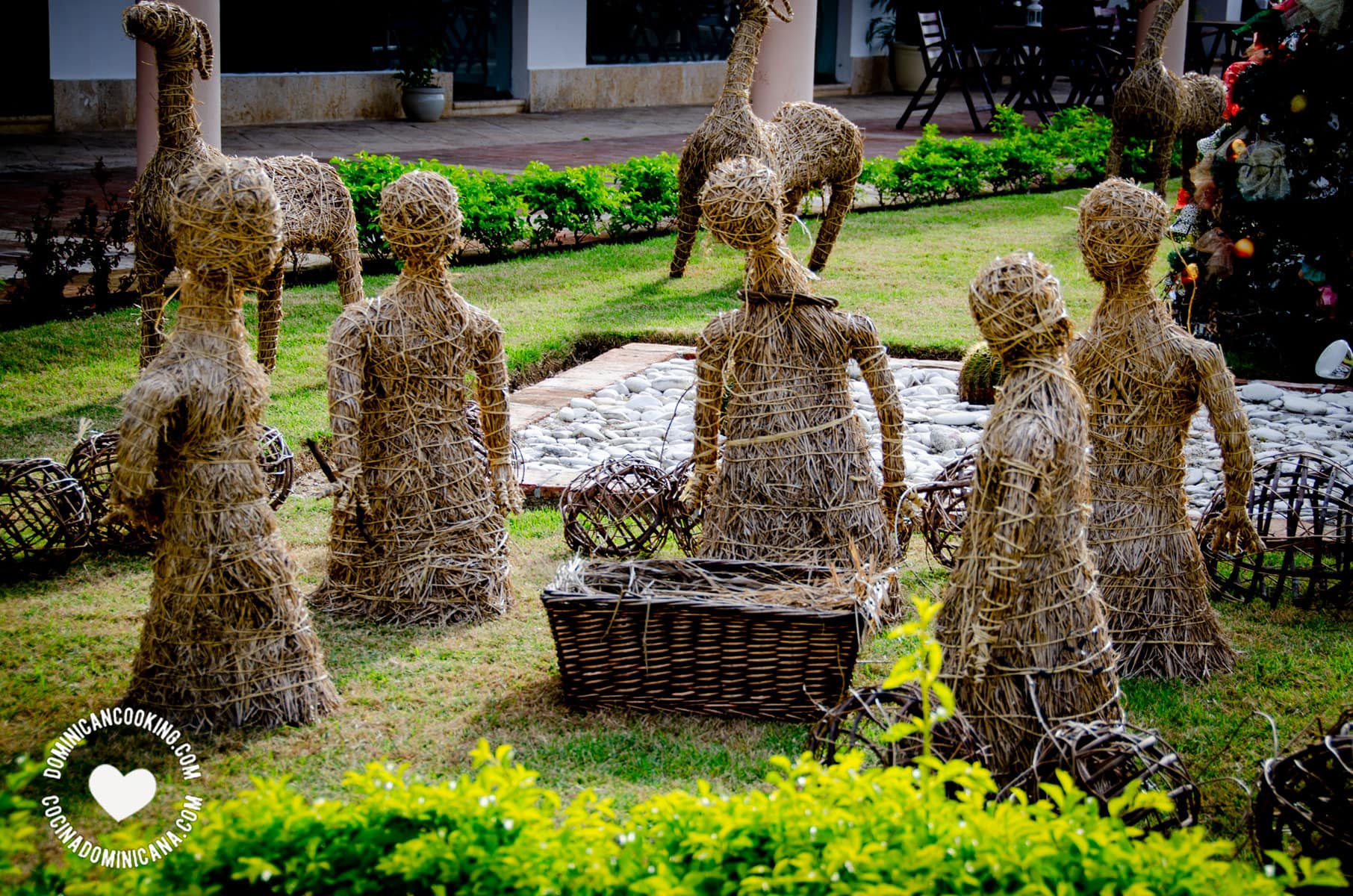
Nacimientos – one of the most popular traditional Dominican Christmas decorations and symbols - are cribs or nativity scenes; many Dominican families still follow this tradition of installing a Nacimiento at the center of their Christmas decorations [1].
Nacimientos can range from life-size to miniature, and some public Christmas events include a living nativity scene.
Large, freestanding Christmas decorations known as charamicos also make an appearance. Charamicos can take the shape of Dominican Christmas trees, angels, stars, reindeer, farm animals, and other creations fashioned out of wooden branches [2].
Glittering and twinkling Christmas lights are a firm favorite and especially magical when wound around palm trees.
It is also customary to decorate the house for the festive season with a wreath on the door, a festive-themed doormat, plates, table mats, other household items with seasonal motifs, and Christmas flowers such as poinsettias (flores de pascua).
Christmas customs and traditions
Religious events
La Misa del Gallo is the name for the Roman Catholic Midnight Mass celebrating the nativity of Christ on Christmas Eve (la noche buena, literally "the good night"), although the religious service is often held earlier in the evening.
Dominican gift-giving customs
In the Dominican Republic, gift-giving traditions vary according to family customs and economic limitations. But as a rule, gifts are only given to the children of the family.
In most parts of the country, children receive their gifts on Three Kings Day, el Día de los Reyes Magos, simply known as Reyes, on the 6th of January. Other parts of the country, especially the north, have the tradition of el Niño Jesus (Baby Jesus) bringing gifts to children on Christmas Eve/Morning.
As the country becomes globalized, these traditions have -- to a certain extent -- been abandoned in favor of Santa Claus as the gift-bringer.
Not as well known, "La Vieja Belén" is a folk character who brings gifts to children who, for one reason or another, did not receive them for Three Kings Day and who comes a week after Día de Reyes.
Angelitos
Angelito ("little angel") is the Dominican equivalent of Secret Santa, or "White Elephant" special gift exchanges, and are very popular in the workplace and schools in the run-up to Christmas.
Participants exchange small gifts – usually humorous – on a weekly basis, and a larger gift at the end.
Read more: Inexpensive Edible Holiday Gifts
A Christmas basket, Dominican style
The list of contents of a Dominican Christmas basket can range from select gourmet treats often sent by businesses as a token of appreciation to their regular clients - to a basket of staples, which is a great way of helping needier households ensure they celebrate their traditional Christmas dinner.
I thought I'd concentrate on the latter to help those wishing to make a useful gift to friends and neighbors under economic strain at this time of the year. My suggested list of contents is:
- A bottle of sidra (sparkling apple wine)
- A bottle of eggnog
- A packet of mixed nuts or separate packets of walnuts, hazelnuts, and almonds. Dried fruit like raisins, dates, and figs.
- A couple of packets of candies: marshmallows and sweets, chocolate kisses, or mixed packs.
- Some cookies and crackers.
- Seasonal fruit: grapes, apples, pears, mandarins.
- A packet or a couple of tins of pigeon peas (guandules) for the moro. With or without a can of coconut milk.
- A bag of rice
- A bottle of vegetable oil
- Mayonnaise for the potato salad
- Sugar
- Coffee
Of course, you can vary the contents and quantities according to your budget, the size of the household, and personal taste and preference.
Christmas weather in the Dominican Republic
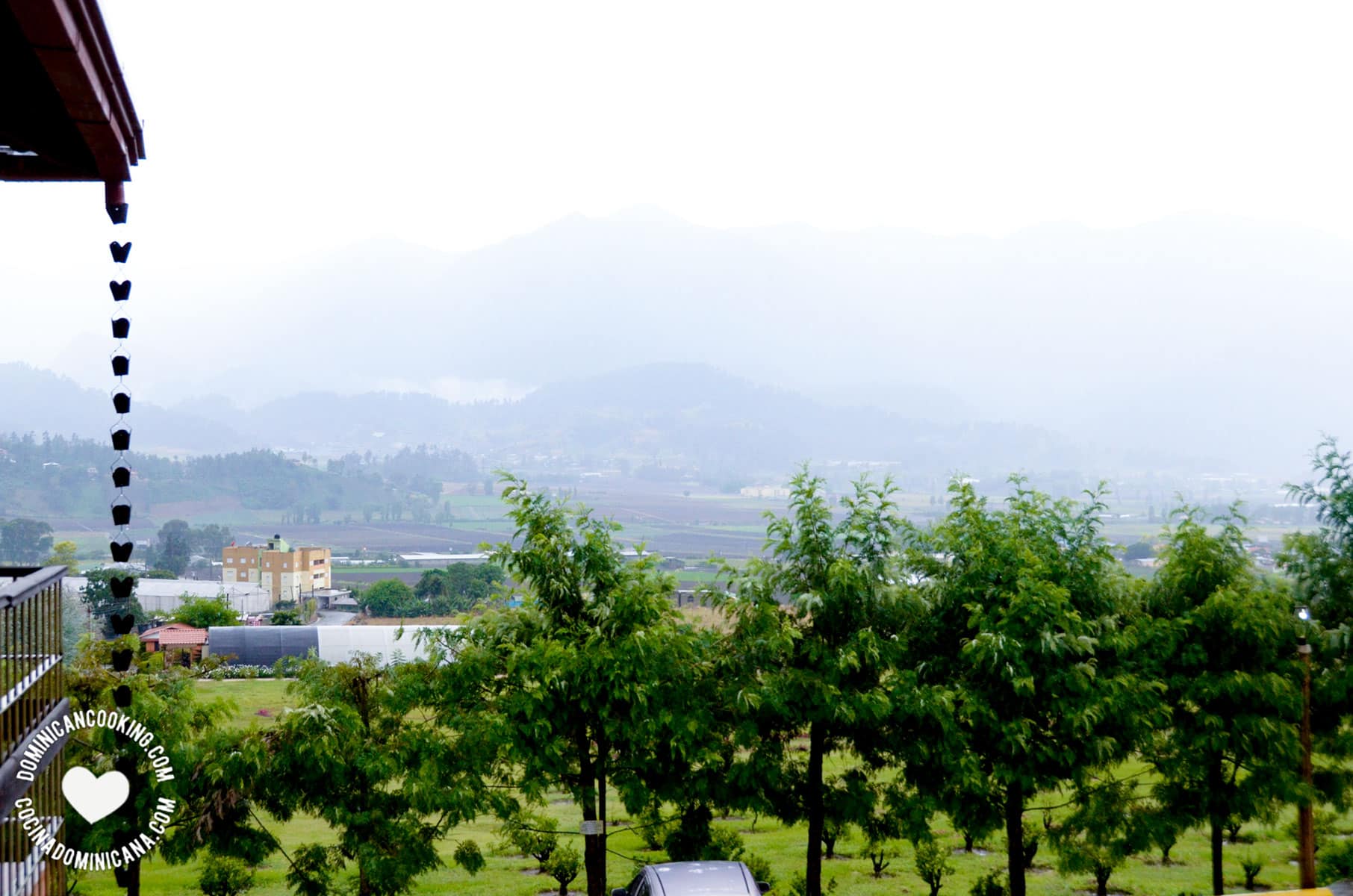
Although the Christmastime weather in most of the country is still pretty warm, December and January are the coolest months of the year. In the lower-lying coastal areas, it is still mostly beach weather.
In the mountainous regions, especially in the Constanza-Valle Nuevo area, the weather is much more "Christmassy" and can dip down to freezing at this time of the year.
Dominican Christmas music and songs
The tradition of aguinaldo is like a more exuberant version of Christmas caroling: a group of friends goes from house to house in the early hours of the morning, singing Christmas songs, often accompanied by musical instruments, and waking up their friends and neighbors to get them to join them as they continue on their way.
It is customary to offer the revelers a drink, such as Té de jengibre, or something stronger like Ponche, or rum
Villancicos is the Spanish word for Christmas carols. The Dominican Republic and other Spanish-speaking Caribbean nations share some of the same merengue or salsa Christmas songs like Alegre Vengo.
Musician and writer Rossy Diaz makes the connection between food and Christmas music [3]:
"These popular Dominican Christmas songs namecheck the food, fruits, and beverages that are traditionally consumed during the Christmas festivities and these sounds can be said to complement the culinary experience.
Christmas in the Dominican Republic can therefore be described as a multi-sensory experience, starting through the ears with classic merengue tracks like Salsa pa tu lechón by Johnny Ventura, Llegó Juanita by Milly Quezada, La juma by El Conjunto Quisqueya, and Pato robao by La Familia André, which start playing on the radio well before December and which complete the narrative of this important social event."
We hope that our guide has given you a decent understanding of the Dominican Republic holidays and traditions and some interesting facts about Christmas in the Dominican Republic.
Should you have any questions or anything to share, we'd love to read it in the comments.
¡Feliz navidad!

Holidays and traditions FAQs
Christmas eve dinner in the Dominican Republic is known as la cena del 24, la cena navideña or la cena de nochebuena.
In the Dominican Republic, Christmas dinner is eaten on the evening of December 24th, Christmas Eve, or Nochebuena, as it is known in Spanish.
The traditional Christmas eve meal in the Dominican Republic usually consists of roast pork (or roast chicken, or roast turkey), moro de guandules, and Ensalada rusa as the main dishes, with many other seasonal favorites like Pastelitos and Kipes, Pastelones, and Pasteles en hoja.
You know it’s coming up to Christmas in the Dominican Republic when you start seeing a combination of traditional decorations like Nacimientos (Nativity scenes), charamicos (made by artisans with twigs and branches), and flores de pascua (poinsettia flowers). You will also find plenty of imported motifs and ornaments like Christmas lights, Christmas trees, Santa Claus figures, elves and reindeer, and wreaths.
References
- De “Volvió Juanita” a “La hora de volver”, la música del retorno navideño en RD.
- ¿Cómo celebramos los dominicanos la Navidad y Año Nuevo [Archived]?
- Los Charamicos Navideños [Archived]: "Artesanía de Dominicanos"
- Culture Smart! Dominican Republic: A Guide to Customs and Culture by Ginnie Bedggood and Ilana Benady


